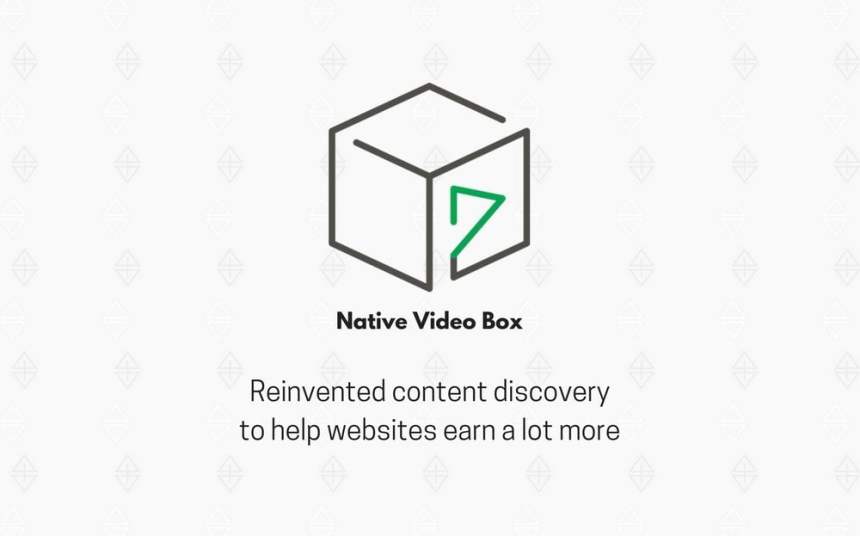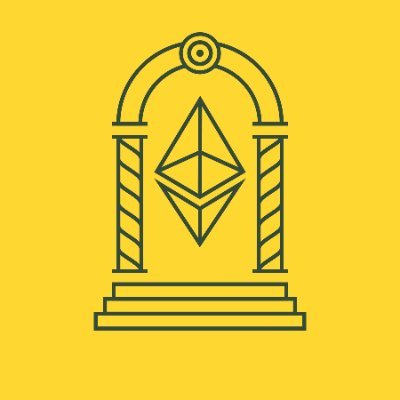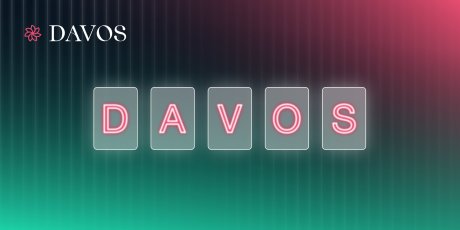April 15 marks the end of the ICO of the Native Video Box project – a platform for promoting video clips based on modern deep machine learning and multi-tier blockchain technologies. Alexander Shishow, founder and CEO, tells us how to make money on video advertising without annoying the user, how NVB differs from YouTube and other traditional content hubs, and why video chosen to match the topic of the site rather than the specific user is now more effective.

Q: There are a huge number of projects on the video advertising market today, every one of which is trying to somehow be better than their competitors. Can you tell me in brief how you plan to conquer this market? What’s your platform all about?
A: Native Video Box is a service for situational video recommendations. We provide websites and mobile apps with a widget with several licensed videos, which are selected automatically to match the contents of the site, and which are perceived by users not as advertising but as the site’s own content. Our project also ensures the monetization of views of these clips thanks to the insertion of video ads in them.
Q: Can you give us an example of how this would work in practice?
A: Say someone has made a great video about how to bake a cake, or on travel, or on home renovations. Thanks to our platform, their content will automatically appear on sites related to the topic. In effect, we work as distributed media.
Q: How does the process of selecting clips for a specific site work, technically?
A: To start with, our block is installed on the site, which takes on the style of the website. Then our artificial intelligence algorithms go to work: they analyze the text content of the site, determine what its main topics and sub-topics are. Our platform then automatically selects clips from its own video content storage and offers them up when users view the page, first analyzing in a fraction of a second the user’s interests and the most popular queries.
Q: Why did you choose the video advertising market specifically? What is it that appealed to you?
A: I’ll just give you a few figures, and everything will be clear. Right now, video accounts for up to 80% of all Internet traffic. In 10 years the amount of video content on the Internet has grown by a factor of 42, and the capitalization of this market is more than $13 billion. Forecasts are this growth will continue.
Q: Those figures are impressive, sure, but there’s another side to the coin…
A: You mean competition?
Q: Exactly. A trend like that is bound to create serious competition that only the strongest and most high-tech companies can withstand. Is there a place here for startups like yours?
A: I have no doubt at all that there is. Why? Because we’re doing it in a way that our clips fit organically into the idea behind the site and don’t annoy people with intrusive advertising. Users will see ads only when they deliberately click on our videos. Thanks to our machine learning system and artificial intelligence, we select our videos to suit each specific site based on the site’s content, and not to suit the user. This is the main way we differ from traditional video hosting services.
Q: Is that a hint at YouTube?
A: Among others, yes.
Q: But YouTube is the largest video site on the planet, with a colossal audience. Anyone who wants to work with video goes there first. Isn’t that right? And if that’s the case, why does the market need you?
A: First of all, when placing video on Internet sites YouTube does not provide automatic selection of the right content for each site; you can only do that manually. Secondly, we allow both sites that are connected to us and content producers to make money, which ensures more monetization of content. YouTube and other sites like it are focused first and foremost on their own earnings.
Q: That’s all quite logical and understandable, but no one’s going to believe you if you say you’re working on the idea and not looking to earn money, are they?
A: Absolutely right, but we take a somewhat different approach.
Q: Which is?
A: We provide websites with high-quality, relevant video content, something they haven’t had before. Content like that makes a website more attractive to visitors, which extends the amount of time they spend on the site. Especially when they watch videos, users don’t go anywhere – our widgets are built into the site. In turn, the longer visit time on the site brings in an additional audience. In addition, the benefit to the site is that it pays nothing for the creation of high-quality video content, but at the same time, it earns money by having these videos on the site.
Q: Why is that?
A: By inserting hidden or not-so-hidden ads of another good or service in these videos. Everyone got used to product placement in television and in movies a long time ago. We do virtually the same thing, only on the Internet. In the end, all our clients come out ahead. They don’t get some lame ad whacking them across the head; instead, they get related materials on a completely different level. Plus, a greater number of views of the video, a bigger audience, and an acceptable price for services and high-quality click conversion.
Q: Your clients are completely different players in the video market: the websites that feature the videos, content producers, and advertisers. How do you distribute the profit from showing ads among them?
A: They are divided as 60% for the publisher, 25% platform fee and 15% goes to the content creator, respectively. All relations are governed using a smart contract.
Q: So, all the income from the advertising goes to your clients. In this case, how does your platform earn its money?
A: At the first stage, from the sale of video advertising using software platforms or RTB auctions (Real Time Bidding, an online advertising technology that works like an auction for advertising spots in real time – ed.). Later, we also plan to place native promo clips of various brands and to insert fragments in a sports video dedicated to the producers of sports equipment, in a video about travel – stories by travel bloggers about how to save on flights etc. In addition, with each showing of a video, we will receive a certain amount as a service fee.
Q: So how many sites have already signed on to your platform? What kind of figures are you planning on seeing in the near future?
A: In May 2018 about a thousand sites will be connected, which will provide about 120 million advertising views. Then in August sites in Europe and the UK will join us – that’s another 3,000 sites. In February 2019 there will be another 6,000 sites in Latin America. By 2019 we plan to hit 12,000 sites and 1 billion advertising views.
Q: And all these sites are ready to take your video right now?
A: Yes, they are.
Q: Can you explain what NVB needs blockchain for, and how you’ve integrated it into the project?
A: First of all, to work in a multi-currency environment and conduct internal settlements using tokens all over the world. This frees us from possible restrictions on financial transactions in various countries and cuts our transaction cost by a substantial amount – up to 30%.
Secondly, to reduce our financial and technical expenses. Thanks to blockchain the cost of settlements is dropping fast, and we don’t need to incur additional expenses on paperwork, which makes it possible to seriously cut our expenditures.
Thirdly, to put the cost of showing ads in writing, in smart contracts.
And, finally, blockchain gives our platform 100% transparency for the performance of various operations.
Q: How so?
A: For example, we are physically unable to unilaterally change the terms of distributing bonuses for video views. This means that the money of our advertisers, sites, and content owners will be completely secure.
Q: And this is written into smart contracts?
A: Yes. Our entire monetization system will be written into smart contracts, and the smart contracts, in turn, are available on GitHub (a major web service for hosting IT projects and their joint development – ed.). Their structure is open and transparent, and anyone who wants can take a look and see what’s written in them and how.
Q: Are you not planning to also write in the blockchain the number of times the video has been shown?
A: Yes, eventually we want to do so, in order to prevent once and for all any opportunities for fraud on the part of platform participants.
Q: What countries are you working with now, and what national markets are the project-oriented to in general?
A: First and foremost, we’re interested in the international English-speaking market – Europe, America, parts of Asia. Later, we plan to turn to countries that speak other European and Asian languages.
Q: How far along towards completion is your platform?
A: Its most important functions are all but fully implemented. Our site has six demo-versions of how it works with specific sites: there’s a preview of our projects on the Internet, demonstrating how video is shown using our widgets… In effect, it’s a full-fledged presentation of our work for potential clients.
Q: How long did it take you to create the NVB platform?
A: We began to develop the project in 2016, made the prototype, and in less than half a year it had already begun to earn its keep on the local market. We spent more than two years refining the platform – for example, over the past year we’ve worked to improve the machine learning algorithms, which are the core of the service.
Q: Your ICO finishes on April 15. Why do you need it? What do you plan to do with the money collected, and what are your current business objectives?
A: We have some very serious plans for the future. We need the money for marketing. We plan to develop the network itself, as well as technologies for targeting and delivering video and working with advertising. We’ll attract and promote new platforms with higher quality content, which are ready to host video clips. Our plans also include developing the network of video publishers and producers: we want to create a community for those who make video content. This will be our unique, distributed video hosting service. We’re also contributing to the development of algorithms for video selection and content recommendations, and to the development of technological infrastructure – in particular, a decentralized storage facility and multi-tier blockchain.
Q: How many people do you have on your team?
A: Right now, there’s a couple of dozen people working on the project.
Q: What kind of people are they?
A: They’re seasoned managers and specialists, with diverse, relevant experience in fintech and blockchain. For example, one of our team leaders is Andrey Smirnov, who has huge experience developing servers, external interfaces, and databases, and who also has knowledge of machine learning. Our business development manager, Paul Vasin, developed an advertising network and technology for Begun – the first contextual advertising service in Russia. Our senior developer Andrey Tsvetkov really knows his way around video advertising technologies VAST/VPAID, RTB open auctions, and advertising software like Weborama and Buzzoola. Dmitry Solodkiy is an expert in processing analytical data and is one of the pioneers of the blockchain, with an economics degree from the University of Bonn. Anton Noginov is a pro at constructing high-load systems, cryptographic algorithms, blockchain development, and the implementation of smart contracts. Peter Kozyakov and Alexander Vasilev are first-class specialists in fintech.
Q: You forgot to talk about yourself.
A: I’ve been working in ad tech for many years, and I’ve worked on projects using machine learning, including at companies like the Mirax Group and Creative Mob. I also launched the Botscanner project, an automated traffic quality control system.
Q: Who are your advisers?
A: We have several highly respected advisers: Gabriel Zanko, Andrew Playford, Mike Raitsyn, Julian Zegelman, and Yaacov Bitton. We are also being advised by Alexander Miheev, managing director of GOSU Data Lab and former CEO of MGID.
Q: You already mentioned that the video content market is extraordinarily promising and has a colossal growth potential. What place in this market is Native Video Box going to hold a few years from now? Are you making plans in this respect?
A: We plan on taking only a small part of it – a few percent, all in all. However, if you translate these percentages into money, that’s already hundreds of millions of dollars in profit.
Q: Could you be a bit more specific?
A: Our goal is to reach a turnover of $88 million in the first year, and to pay out up to $66 million to content owners and sites. We have deliberately decided not to put all our company’s income exclusively to paying out profits or to the growth of our own capitalization without any specific goals. The reason our project exists is to provide a convenient service to all interested parties and to direct income to its development and increase its ease of use.






















